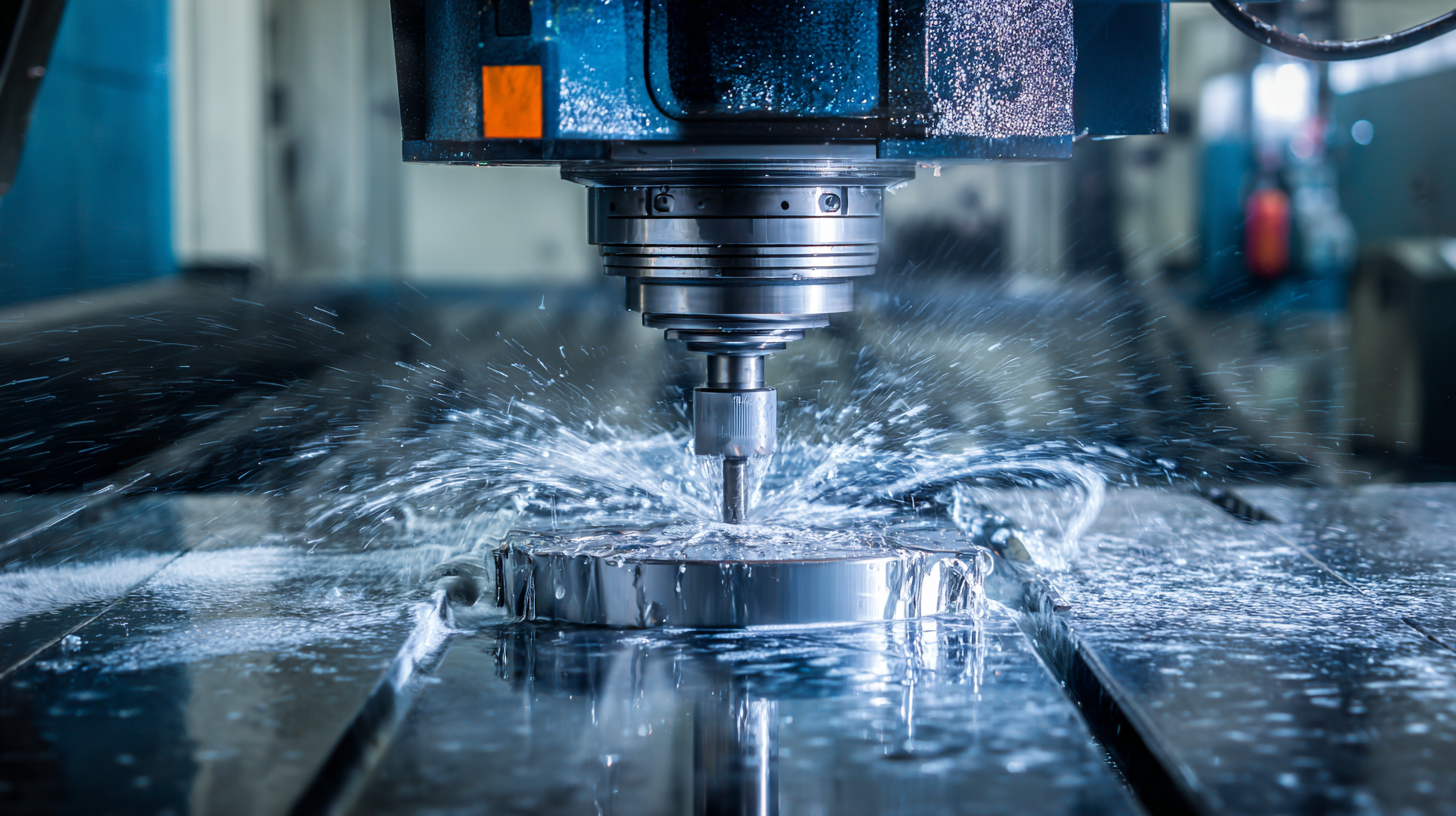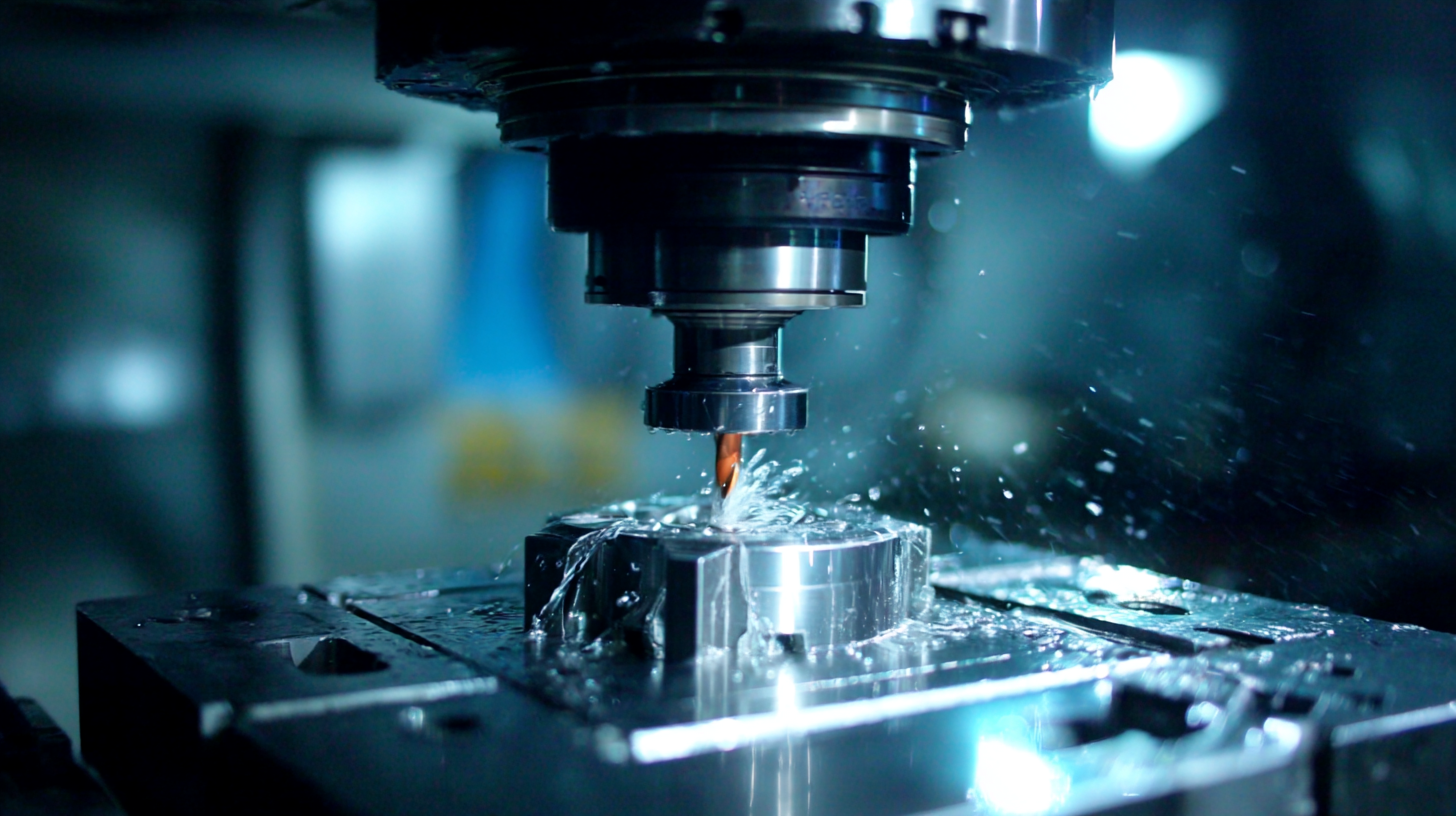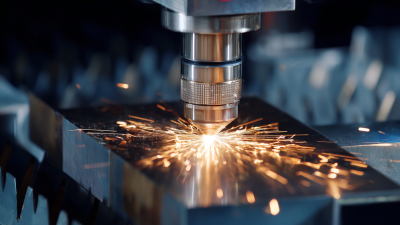How CNC Cutting Technology Is Revolutionizing Manufacturing: Insights and Trends for 2024
As we move into 2024, the manufacturing sector is witnessing a transformative shift driven by advancements in CNC cutting technology. According to a report by MarketsandMarkets, the global CNC machine market is projected to reach $117.2 billion by 2024, reflecting a compound annual growth rate (CAGR) of 5.6% from 2019. This surge is primarily fueled by the increasing demand for precision engineering and automation across various industries, including aerospace, automotive, and electronics. CNC cutting not only enhances production efficiency but also significantly reduces waste, providing manufacturers with a sustainable competitive advantage. Furthermore, with the rise of Industry 4.0, the integration of Internet of Things (IoT) and artificial intelligence (AI) into CNC systems is revolutionizing how businesses approach design and manufacturing processes.

This article explores the insights and trends in CNC cutting technology that are shaping the future of manufacturing, paving the way for innovation and excellence in operational productivity.
Understanding the Basics of CNC Cutting Technology: A Guide for Beginners
CNC cutting technology has become an essential tool in modern manufacturing, enabling precision and efficiency like never before. For beginners looking to understand this innovative process, it's crucial to grasp the basic concepts of Computer Numerical Control (CNC). Essentially, CNC cutting involves the use of computer software to control machinery that cuts materials into specific shapes and sizes. This technology reduces human error and increases repeatability, making it ideal for various applications, from automotive parts to intricate designs in furniture making.
**Tips:** Start by familiarizing yourself with common CNC machines, such as routers, plasma cutters, and laser cutters. Each machine has its own strengths and weaknesses based on the materials you intend to work with. Understanding the differences can help you choose the right tool for your project.
Additionally, consider investing in user-friendly CNC software that offers tutorials and support for beginners. Many programs include simulation features, allowing you to practice designs without wasting materials. This can significantly reduce the learning curve and improve your confidence in using CNC technology for your manufacturing needs.
Exploring the Key Benefits of CNC Cutting in Modern Manufacturing
CNC (Computer Numerical Control) cutting technology is rapidly transforming the landscape of modern manufacturing, offering significant benefits that align with the industry's needs for precision and efficiency. According to a report by Smithers Pira, the CNC machining market is projected to reach $100 billion by 2025, driven by the demand for high-quality manufacturing solutions. The precision offered by CNC cutting allows manufacturers to produce intricate designs with minimal human intervention, significantly reducing the margin for error and enhancing product quality.
One of the most prominent advantages of CNC cutting is its ability to increase production speed while maintaining consistent quality. Research from the National Institute of Standards and Technology indicates that CNC machines can operate up to 60% faster than traditional machining methods. This efficiency not only accelerates project timelines but also reduces operational costs, allowing manufacturers to reinvest in innovation and expansion. Furthermore, CNC technology supports the customization of products at scale, which is becoming increasingly important in a market that values personalized solutions. As companies strive to maintain a competitive edge, harnessing the capabilities of CNC cutting technology will be crucial for fostering growth and adaptability in the evolving manufacturing sector.
How CNC Cutting Technology Is Revolutionizing Manufacturing: Insights and Trends for 2024
| Dimension | Data |
|---|---|
| Market Growth Rate (2024) | 9.5% |
| Average Cost Savings | 15-30% |
| Increased Production Speed | Up to 50% |
| Material Types Used | Metal, Wood, Plastic, Composites |
| Training Time for Operators | 30-60 days |
| Percentage of Automation in Manufacturing | 75% |
| User Satisfaction Rating | 4.5/5 |
Top Trends in CNC Cutting Technology to Watch for in 2024
The CNC cutting technology landscape is witnessing transformative trends that are shaping the manufacturing sector as we move into 2024. One of the key developments is the rise of self-optimized machine cutting, particularly in 5-axis CNC machining centers. These advanced systems are designed to enhance precision and efficiency, enabling manufacturers to produce complex geometries with minimal waste. As the industry embraces artificial intelligence, the integration of smart algorithms into CNC machining processes will drive further advancements, allowing machines to adapt and optimize their cutting paths in real-time.

Moreover, the laser optics market is expected to see significant growth, fueled by innovations in laser technology. Key applications, including laser processing and optical communication, are anticipated to expand as manufacturers seek to leverage the advantages of fiber lasers in various industries, from automotive to healthcare. The projected increase in market size—from USD 18.2 billion in 2024 to USD 31.4 billion by 2033—highlights the ongoing investments and research dedicated to refining laser technologies, which are set to play a crucial role in next-generation manufacturing solutions. As these trends continue to evolve, staying informed about the latest advancements in CNC cutting technology will be essential for industry stakeholders looking to maintain a competitive edge.
How to Choose the Right CNC Cutting Machine for Your Manufacturing Needs
When selecting the right CNC cutting machine for your manufacturing needs, consider the specific applications you have in mind. The type of materials you will be working with—such as metal, wood, or composites—plays a crucial role in determining which CNC machine is best suited for your operations. For instance, laser cutting machines are highly effective for intricate designs on various materials and are available in different types, including fiber and CO2 lasers.
**Tip:** Always assess the machine’s compatibility with your existing workflow. A seamless integration can boost efficiency and reduce downtime. Additionally, it's important to consider the machine's ease of use, as well as the availability of technical support and training.
Another critical factor is the machine's performance attributes, such as speed, precision, and operational costs. CNC machines with advanced features, like automatic tool changers and enhanced software capabilities, may provide long-term benefits despite higher upfront investment.
**Tip:** Calculate your potential return on investment by evaluating production volume and quality improvements. Look for machines that not only meet your current needs but also offer scalability for future projects.

Implementing CNC Cutting Solutions: Best Practices for Increased Efficiency
Implementing CNC cutting solutions effectively can significantly enhance manufacturing efficiency. One of the best practices is to ensure proper training for operators and technicians. By investing in comprehensive training programs, companies can maximize the potential of their CNC machines. Skilled operators not only generate high-quality outputs but also minimize errors, which can lead to reduced material waste and lower operational costs.
Another critical aspect is regular maintenance of CNC equipment. Establishing a scheduled maintenance routine can prevent unexpected breakdowns and prolong the lifespan of machines. This not only keeps production on track but also ensures consistent quality in the outputs. Additionally, integrating software that allows for real-time monitoring of machine performance can provide valuable insights, enabling manufacturers to make data-driven decisions that improve overall productivity and efficiency in their operations.
Trends in CNC Cutting Technology for 2024
This bar chart illustrates the projected impact of key benefits from implementing CNC cutting technology in manufacturing by 2024. Significant improvements are anticipated in production efficiency, precision, material savings, energy efficiency, and cost reduction, emphasizing the transformative potential of adopting CNC cutting solutions.
Machine models and specifications are subject to change without notice.


